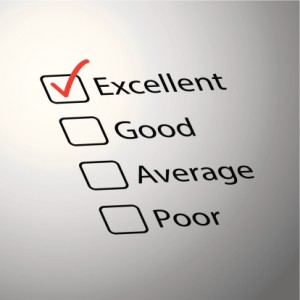This content has been archived. It may no longer be relevant
Some time in the past year, we were managing a large-scale project for an industrial company, hereinafter referred to as Client. Client was operating under a severe time crunch, and needed access to the translated documents as soon as humanly possible… namely, before they’d gone through the proofreading stage. Now, one thing we don’t do is release a translation before it’s been proofed, reviewed and cleaned up. When we explained our reluctance to do this, while discussing alternate ways to shorten the turn-around time, Client was surprised at what was perceived as a lack of quality assurance checks on our part, and asked something that has stayed with us: “How do you test your product during the process?”
At first, we were a bit perplexed at the question – translation is a product, but not the kind of product that can be accurately assessed in an incomplete state. You can’t taste a spoonful of translation for seasoning, or test its integrity under extreme pressure, or observe how it holds up in a wind tunnel. Translating, like writing of any kind, is an ephemeral thing until the final document is produced. But as we then realized, no, this is not obvious, and Client’s question was both understandable and reasonable. Translation services are generally not the first thing on a businessperson’s mind, as there’s so much to take care of and prepare at home, before and during the process of moving into different languages. As such, getting a translation that’s a) of great quality and b) delivered on time is the chief concern. Who could blame Client for being perplexed by quality management that differs from the more familiar technical/industrial model?
TrueLanguage is a business with ISO 9001:2015 certification, which we couldn’t have without a system of quality checks* in place… so how do we assure the quality of our translations?
Great resources = great translations: the clearest way to ensure a top-quality translation is to work with top-quality translators and proofreaders. So we put special emphasis on locating and engaging native speakers, and only native speakers, who have demonstrated linguistic excellence and subject matter expertise in a broad range of fields. We review, we test, we seek references, we gauge abilities, reliability and disposition before we add a resource to our talent pool. When you work with us, your translation team will have full knowledge of your target language, your area of specialization, and your market needs.
Four eyes (or more eyes): as we’ve said elsewhere, translation is meticulous and exacting work, requiring concentration. And no one translator can produce and correct a release-ready document in isolation – we’ve all had the experience of laboring over a crucial e-mail, only to find a few errors after sending it, which another pair of eyes would have caught right away! This is why our clients get a translation team made up of two resources at a minimum, one to translate and one to proof, in compliance with the four-eyes principle. The more eyes we have on your project, the more nets we have to catch inconsistencies, and the more experts we have on hand to assist us and each other. For large projects requiring three or more resources, your team will have a designated lead translator, responsible for the proofreading, and for the ultimate consistency, terminology and accuracy checks before delivery to us.
Format, review and record: our QA process is pretty front-heavy, you could say. We expend a great deal of energy setting everything up in an advantageous way at the start of a translation project, so that when the translation is proofed and signed off by the team, we can focus on the technical/cosmetic aspects of getting it delivered to you in the shape we received it in – our goal is to present you with the same document in every way, only in a different language, through careful formatting and expert desktop publishing services, if needed. Typeset documents are sent back to the translation team for a final review and green light, before we deliver them to you. And if your own review process (you do have one, right? You should, and we can help you set one up!) should turn up some issues, we save them in our end-of-project report. Each project we do gets one of these, which gives our whole team full awareness not only of your language needs, but of your regular translators and proofreaders, the special processes that served you best, and any weaknesses or pain points on our end that must be borne in mind in advance of your next project.
True, sometimes we’d love it if we could just test a translation’s quality at any point, like a device on an assembly line. But despite the quirks in the nature of the work, we’ve developed an optimal system for ensuring clarity, accuracy and excellence in the localization experiences we provide. If you’d like to know more about how we maintain our standard of quality in language services, contact us today!
* To be specific, we adhere to a translation quality metric called J2450, developed in 2006 by SAE International to assess language services in the automotive industry (if you like, you can read more about it here). J2450 was subsequently taken up by the medical technology industry, and has since become a standard quality measurement tool for the larger translation business.


